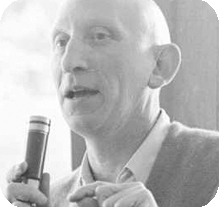
A.M. TURING AWARD WINNERS BY...
Alan J Perlis

United States – 1966
Short Annotated Bibliography
Perlis published over 30 articles and edited and co-authored 5 books. These included scientific and technical publications, contributions to the debate on the identity of computer science, and introductory undergraduate courses to computer science.
- De Millo, Richard A., Richard J. Lipton and Alan J. Perlis, “Social processes and proofs of theorems and programs”, Communications of the ACM, Vol. 22, Num. 5, May 1979, pp. 271-280. This is a controversial attack on the concept of designing flawless computer programs based on highly abstract mathematical methods.
- Newell, Allen, Alan J. Perlis and Herbert A. Simon, “Computer Science”, Science, Vol. 157, Num. 3795, September 22 1967, pp. 1374-1375. The authors present passionate defense of computer science as independent academic field whose purpose was to be the study of all phenomena surrounding computers, including programs, algorithms, and hardware.
- Backus, J. W., F. L. Bauer, J. Green, C. Katz, J. McCarthy, A. J. Perlis, H. Rutishauser, K. Samelson, B. Vauquois, J. H. Wegstein, A. van Wijngaarden and M. Woodger, “Report on the algorithmic language ALGOL 60”, Communications of the ACM, Vol. 3, Num. 5, May 1960, pp. 299-314. This contains the second definition of the programming language ALGOL, which among other significant advances introduced the use of a notation originally developed by John Backus in 1959 to describe programming languages.
- Perlis, A. J., K. Samelson, “Preliminary report: international algebraic language”, Communications of the ACM, Vol.1, Num. 12, December 1958, pp. 8-22. This contains the first definition of the International Algebraic Language (IAL), soon after renamed ALGOL, which aimed to be an universal language for the description of scientific computational processes and their translation into machine programs to be executed in any computer.
-
Chipps, J., M. Koschmann, S. Orgel, A. Perlis and J. Smith, “A mathematical language compiler,” Proceedings of the 1956 11th ACM national meeting, New York, ACM, 1956, pp. 114-117. This is the earliest description of the IT programming system, which allowed the use of mathematical notation and was conceived to be implemented on different types of computers without major modifications.




























 THE A.M. TURING AWARD
THE A.M. TURING AWARD